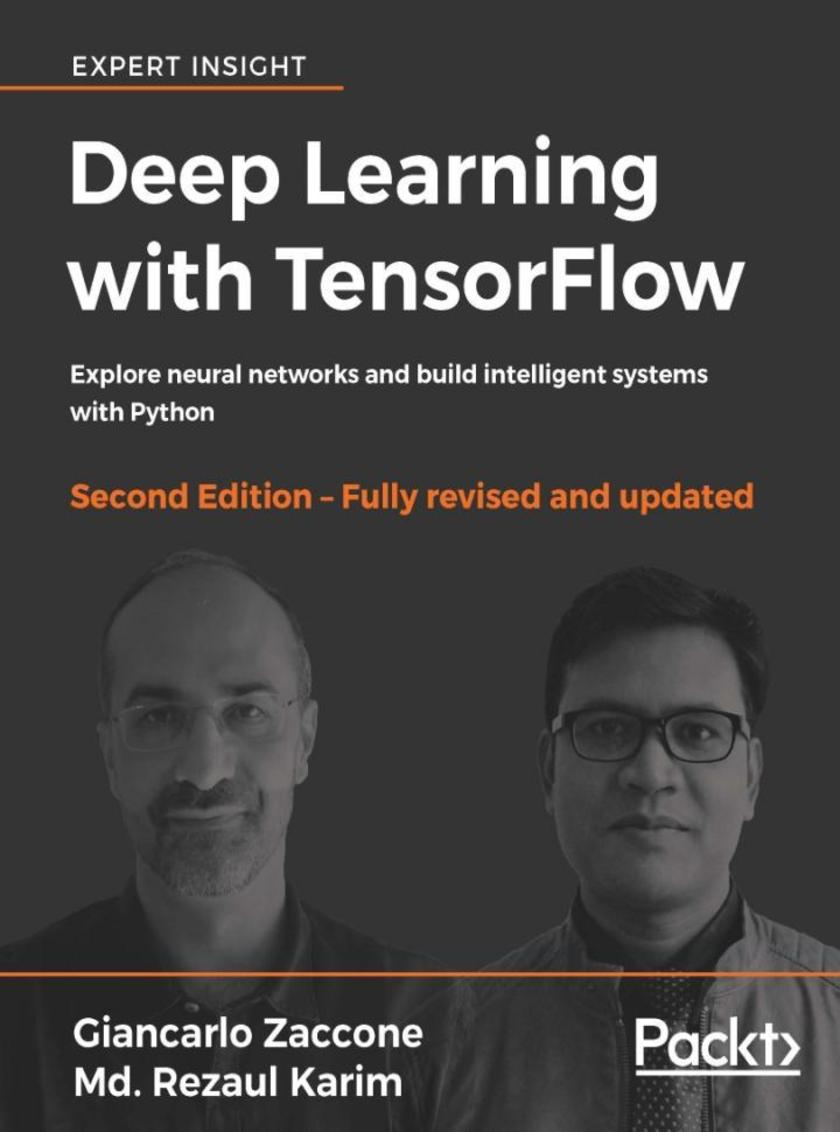
Deep Learning with TensorFlow - Second Edition
¥73.02
Delve into neural networks, implement deep learning algorithms, and explore layers of data abstraction with the help of TensorFlow v1.7. About This Book ? Learn how to implement advanced techniques in deep learning with Google's brainchild, TensorFlow v1.7 ? Explore deep neural networks and layers of data abstraction with the help of this comprehensive guide ? Gain real-world contextualization through some deep learning problems concerning research and application Who This Book Is For The book is for people interested in machine learning and machine intelligence. A rudimentary level of programming in one language is assumed, as is a basic familiarity with computer science techniques and technologies, including a basic awareness of computer hardware and algorithms. Some competence in mathematics is needed to the level of elementary linear algebra and calculus. What You Will Learn ? Apply deep machine intelligence and GPU computing with TensorFlow v1.7 ? Access public datasets and use TensorFlow to load, process, and transform the data ? Discover how to use the high-level TensorFlow API to build more powerful applications ? Use deep learning for scalable object detection and mobile computing ? Train machines quickly to learn from data by exploring reinforcement learning techniques ? Explore active areas of deep learning research and applications In Detail Deep learning is a branch of machine learning algorithms based on learning multiple levels of abstraction. Neural networks, which are at the core of deep learning, are being used in predictive analytics, computer vision, natural language processing, time series forecasting, and to perform a myriad of other complex tasks. This book is conceived for developers, data analysts, machine learning practitioners and deep learning enthusiasts who want to build powerful, robust, and accurate predictive models with the power of TensorFlow v1.7, combined with other open source Python libraries. Throughout the book, you’ll learn how to develop deep learning applications for machine learning systems using Feedforward Neural Networks, Convolutional Neural Networks, Recurrent Neural Networks, Autoencoders, and Factorization Machines. Discover how to attain deep learning programming on GPU in a distributed way. You'll come away with an in-depth knowledge of machine learning techniques and the skills to apply them to real-world projects. Style and approach This step-by-step guide explores common, and not so common, deep neural networks, and shows how they can be exploited in the real world with complex raw data. Benefit from practical examples, and learn how to implement different types of neural nets to build smart applications related to text, speech, and image data processing.

Hands-On Data Visualization with Bokeh
¥54.49
Learn how to create interactive and visually aesthetic plots using the Bokeh package in Python About This Book ? A step by step approach to creating interactive plots with Bokeh ? Go from nstallation all the way to deploying your very own Bokeh application ? Work with a real time datasets to practice and create your very own plots and applications Who This Book Is For This book is well suited for data scientists and data analysts who want to perform interactive data visualization on their web browsers using Bokeh. Some exposure to Python programming will be helpful, but prior experience with Bokeh is not required. What You Will Learn ? Installing Bokeh and understanding its key concepts ? Creating plots using glyphs, the fundamental building blocks of Bokeh ? Creating plots using different data structures like NumPy and Pandas ? Using layouts and widgets to visually enhance your plots and add a layer of interactivity ? Building and hosting applications on the Bokeh server ? Creating advanced plots using spatial data In Detail Adding a layer of interactivity to your plots and converting these plots into applications hold immense value in the field of data science. The standard approach to adding interactivity would be to use paid software such as Tableau, but the Bokeh package in Python offers users a way to create both interactive and visually aesthetic plots for free. This book gets you up to speed with Bokeh - a popular Python library for interactive data visualization. The book starts out by helping you understand how Bokeh works internally and how you can set up and install the package in your local machine. You then use a real world data set which uses stock data from Kaggle to create interactive and visually stunning plots. You will also learn how to leverage Bokeh using some advanced concepts such as plotting with spatial and geo data. Finally you will use all the concepts that you have learned in the previous chapters to create your very own Bokeh application from scratch. By the end of the book you will be able to create your very own Bokeh application. You will have gone through a step by step process that starts with understanding what Bokeh actually is and ends with building your very own Bokeh application filled with interactive and visually aesthetic plots. Style and approach This books take you through a step by step process that starts with understanding what Bokeh actually is and ends with building your very own Bokeh application filled with interactive and visually aesthetic plots that will amaze your users.
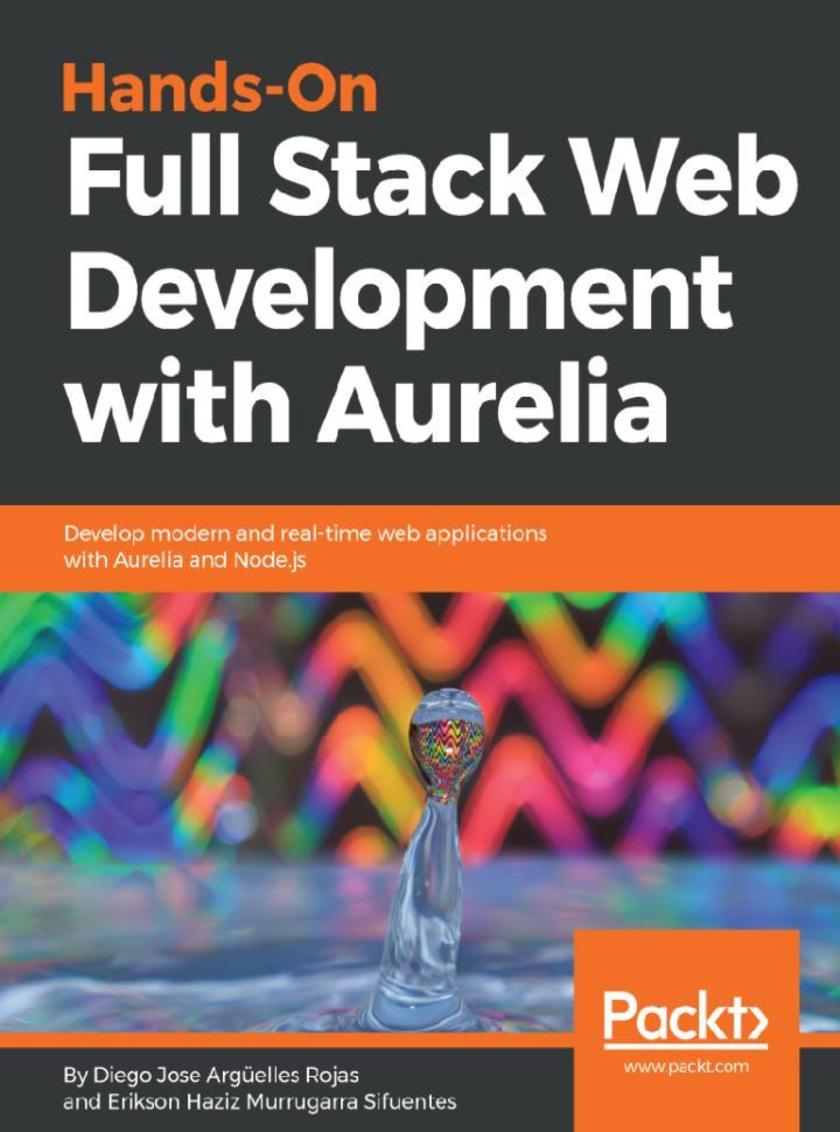
Hands-On Full Stack Web Development with Aurelia
¥73.02
Develop rich and scalable web applications with Node.js, Express.js, and MongoDB About This Book ? Learn the advanced features of Aurelia to build responsive web applications ? Write clean, modular, and testable code that will be easy to maintain and evolve ? Harness the power of JavaScript on the client and server side to build full-stack applications Who This Book Is For Hands-On Full Stack Web Development with Aurelia is for you if you are a web or full-stack JavaScript developer who has experience with traditional stacks such as LAMP, MEAN, or MERN and wish to explore the power of Aurelia and new stack with modern web technologies. What You Will Learn ? Employ best practices and modern approaches to create frontend applications ? Learn about modern CSS preprocessors and improve the readability of your application ? Use the Aurelia framework to create navigable web applications ? Write your own tests, making your application secure and fault-tolerant ? Create solid RESTful APIs using the microservice architecture ? Understand the NoSQL paradigm and get the best performance from your database ? Integrate third-party libraries such as Gmail for Single Sign On ? Write UI testing scripts and integration tests to build extensible apps In Detail Hands-On Full Stack Web Development with Aurelia begins with a review of basic JavaScript concepts and the structure of an Aurelia application generated with the Aurelia-CLI tool. You will learn how to create interesting and intuitive application using the Aurelia-Materialize plugin, which implements the material design approach. Once you fully configure a FIFA World Cup 2018 app, you'll start creating the initial components through TDD practices and then develop backend services to process and store all the user data. This book lets you explore the NoSQL model and implement it using one of the most popular NoSQL databases, MongoDB, with some exciting libraries to make the experience effortless. You'll also be able to add some advanced behavior to your components, from managing the lifecycle properly to using dynamic binding, field validations, and the custom service layer. You will integrate your application with Google OAuth Service and learn best practices to secure your applications. Furthermore, you'll write UI Testing scripts to create high-quality Aurelia Apps and explore the most used tools to run end-to-end tests. In the concluding chapters, you'll be able to deploy your application to the Cloud and Docker containers. By the end of this book, you will have learned how to create rich applications using best practices and modern approaches. Style and approach This is a comprehensive example-based book that guides you to create highly scalable applications using the new MEAN Stack.
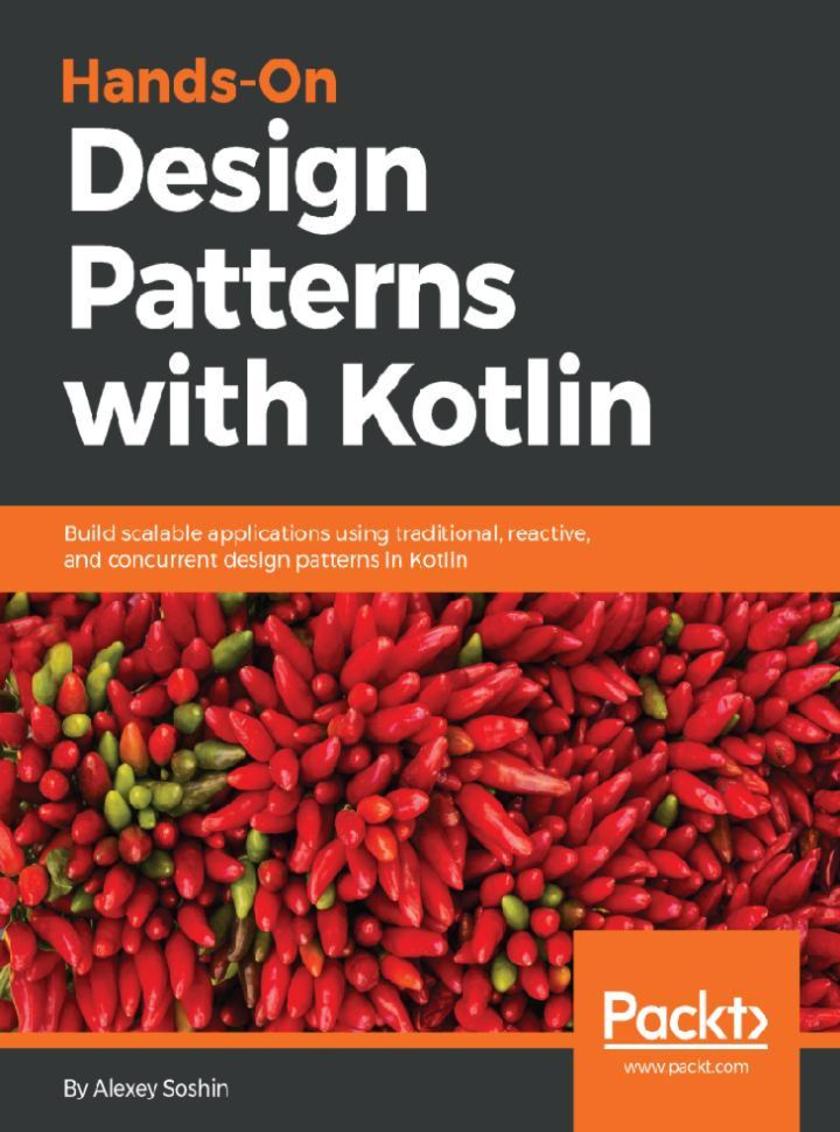
Hands-On Design Patterns with Kotlin
¥81.74
Make the most of Kotlin by leveraging design patterns and best practices to build scalable and high performing apps About This Book ? Understand traditional GOF design patterns to apply generic solutions ? Shift from OOP to FP; covering reactive and concurrent patterns in a step-by-step manner ? Choose the best microservices architecture and MVC for your development environment Who This Book Is For This book is for developers who would like to master design patterns with Kotlin to build efficient and scalable applications. Basic Java or Kotlin programming knowledge is assumed What You Will Learn ? Get to grips with Kotlin principles, including its strengths and weaknesses ? Understand classical design patterns in Kotlin ? Explore functional programming using built-in features of Kotlin ? Solve real-world problems using reactive and concurrent design patterns ? Use threads and coroutines to simplify concurrent code flow ? Understand antipatterns to write clean Kotlin code, avoiding common pitfalls ? Learn about the design considerations necessary while choosing between architectures In Detail Design patterns enable you as a developer to speed up the development process by providing you with proven development paradigms. Reusing design patterns helps prevent complex issues that can cause major problems, improves your code base, promotes code reuse, and makes an architecture more robust. The mission of this book is to ease the adoption of design patterns in Kotlin and provide good practices for programmers. The book begins by showing you the practical aspects of smarter coding in Kotlin, explaining the basic Kotlin syntax and the impact of design patterns. From there, the book provides an in-depth explanation of the classical design patterns of creational, structural, and behavioral families, before heading into functional programming. It then takes you through reactive and concurrent patterns, teaching you about using streams, threads, and coroutines to write better code along the way By the end of the book, you will be able to efficiently address common problems faced while developing applications and be comfortable working on scalable and maintainable projects of any size. Style and approach This book explains design patterns in a step-by-step manner with clear and concise code examples

Introduction to Programming
¥73.02
Get a solid understanding of Java fundamentals to master programming through a series of practical steps About This Book ? Enjoy your first step into the world of programming ? Understand what a language is and use its features to build applications ? Learn about a wide variety of programming applications Who This Book Is For Introduction to Programming is for anybody who wants to learn programming. All you’ll need is a computer, internet connection, and a cup of coffee. What You Will Learn ? Understand what Java is ? Install Java and learn how to run it ? Write and execute a Java program ? Write and execute the test for your program ? Install components and confgure your development environment ? Learn and use Java language fundamentals ? Learn object-oriented design principles ? Master the frequently used Java constructs In Detail Have you ever thought about making your computer do what you want it to do? Do you want to learn to program, but just don't know where to start? Instead of guiding you in the right direction, have other learning resources got you confused with over-explanations? Don't worry. Look no further. Introduction to Programming is here to help. Written by an industry expert who understands the challenges faced by those from a non-programming background, this book takes a gentle, hand-holding approach to introducing you to the world of programming. Beginning with an introduction to what programming is, you'll go on to learn about languages, their syntax, and development environments. With plenty of examples for you to code alongside reading, the book's practical approach will help you to grasp everything it has to offer. More importantly, you'll understand several aspects of application development. As a result, you'll have your very own application running by the end of the book. To help you comprehensively understand Java programming, there are exercises at the end of each chapter to keep things interesting and encourage you to add your own personal touch to the code and, ultimately, your application. Style and approach This step-by-step guide will familiarize you with programming using some practical examples.
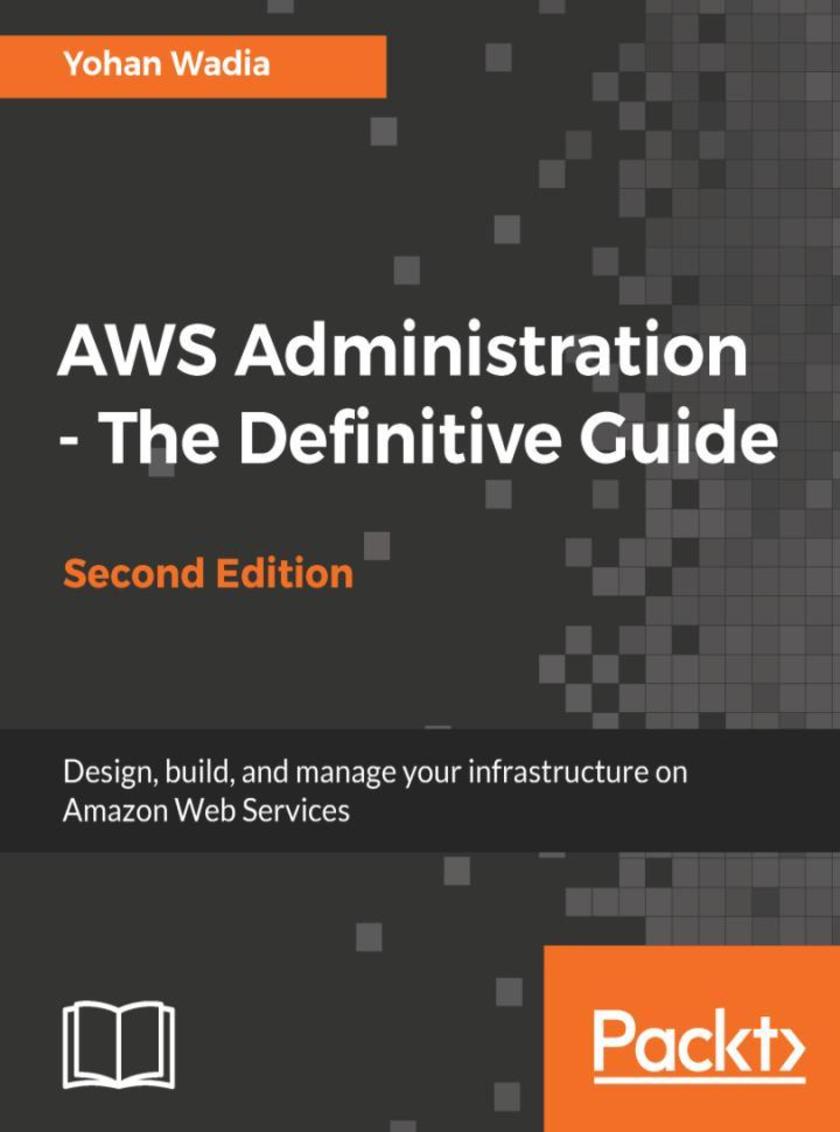
AWS Administration - The Definitive Guide - Second Edition
¥81.74
Leverage this step-by-step guide to build a highly secure, fault-tolerant, and scalable Cloud environment About This Book ? Learn how to leverage various Amazon Web Services (AWS) components and services to build a secure, reliable, and robust environment to host your applications on. ? Delve into core AWS service offerings with hands-on tutorials, real-world use case scenarios, and best practices. ? A self-paced, systematic, and step-by-step guide to learning and implementing AWS in your own environment. Who This Book Is For This book is for those who want to learn and leverage the rich plethora of services provided by AWS. Although no prior experience with AWS is required, it is recommended that you have some hands-on experience of Linux, Web Services, and basic networking. What You Will Learn ? Take an in-depth look at what's new with AWS, along with how to effectively manage and automate your EC2 infrastructure with AWS Systems Manager ? Deploy and scale your applications with ease using AWS Elastic Beanstalk and Amazon Elastic File System ? Secure and govern your environments using AWS CloudTrail, AWS Config, and AWS Shield ? Learn the DevOps way using a combination of AWS CodeCommit, AWS CodeDeploy, and AWS CodePipeline ? Run big data analytics and workloads using Amazon EMR and Amazon Redshift ? Learn to back up and safeguard your data using AWS Data Pipeline ? Get started with the Internet of Things using AWS IoT and AWS Greengrass In Detail Many businesses are moving from traditional data centers to AWS because of its reliability, vast service offerings, lower costs, and high rate of innovation. AWS can be used to accomplish a variety of both simple and tedious tasks. Whether you are a seasoned system admin or a rookie, this book will help you to learn all the skills you need to work with the AWS cloud. This book guides you through some of the most popular AWS services, such as EC2, Elastic Beanstalk, EFS, CloudTrail, Redshift, EMR, Data Pipeline, and IoT using a simple, real-world, application-hosting example. This book will also enhance your application delivery skills with the latest AWS services, such as CodeCommit, CodeDeploy, and CodePipeline, to provide continuous delivery and deployment, while also securing and monitoring your environment's workflow. Each chapter is designed to provide you with maximal information about each AWS service, coupled with easy to follow, hands-on steps, best practices, tips, and recommendations. By the end of the book, you will be able to create a highly secure, fault-tolerant, and scalable environment for your applications to run on. Style and approach This in-depth and insightful guide is filled with easy-to-follow examples, real-world use cases, best practices, and recommendations that will help you design and leverage some of the most commonly used AWS services.
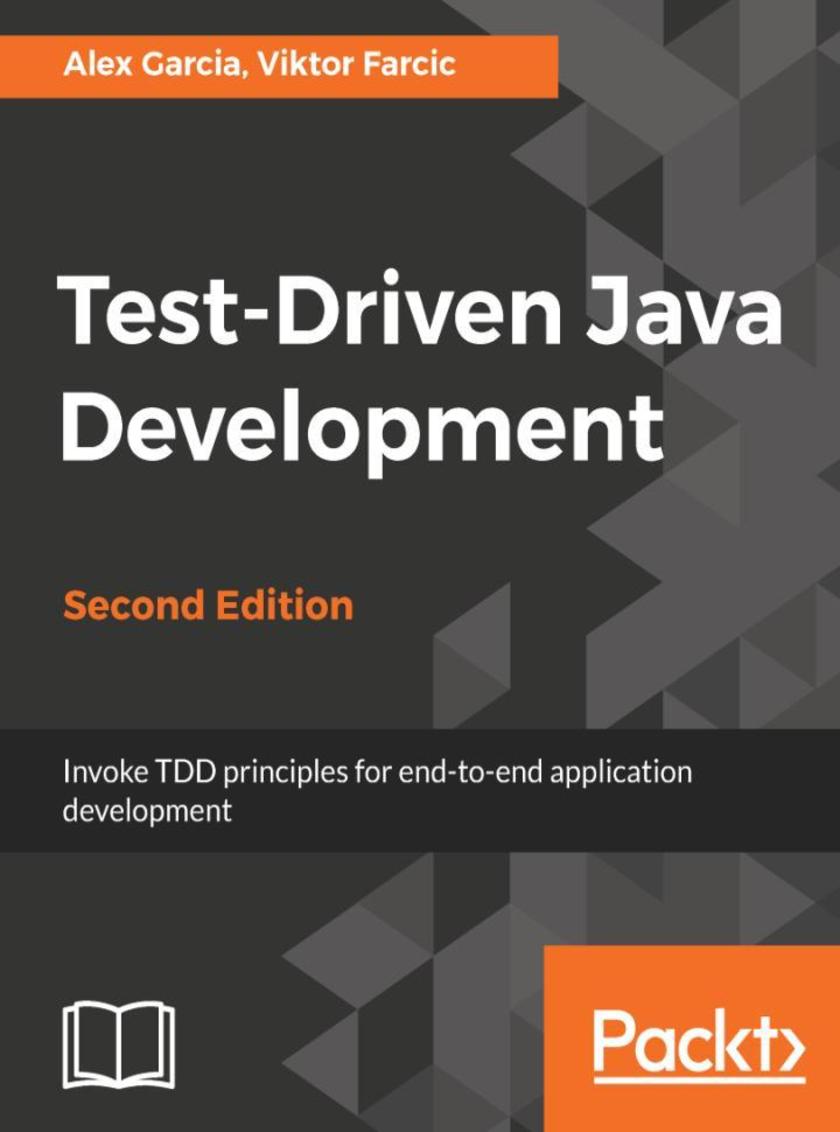
Test-Driven Java Development - Second Edition
¥90.46
This book will teach the concepts of test driven development in Java so you can build clean, maintainable and robust code About This Book ? Explore the most popular TDD tools and frameworks and become more proficient in building applications ? Create applications with better code design, fewer bugs, and higher test coverage, enabling you to get them to market quickly ? Implement test-driven programming methods into your development workflows Who This Book Is For If you're an experienced Java developer and want to implement more effective methods of programming systems and applications, then this book is for you. What You Will Learn ? Explore the tools and frameworks required for effective TDD development ? Perform the Red-Green-Refactor process efficiently, the pillar around which all other TDD procedures are based ? Master effective unit testing in isolation from the rest of your code ? Design simple and easily maintainable code by implementing different techniques ? Use mocking frameworks and techniques to easily write and quickly execute tests ? Develop an application to implement behavior-driven development in conjunction with unit testing ? Enable and disable features using feature toggles In Detail Test-driven development (TDD) is a development approach that relies on a test-first procedure that emphasizes writing a test before writing the necessary code, and then refactoring the code to optimize it.The value of performing TDD with Java, one of the longest established programming languages, is to improve the productivity of programmers and the maintainability and performance of code, and develop a deeper understanding of the language and how to employ it effectively. Starting with the basics of TDD and understanding why its adoption is beneficial, this book will take you from the first steps of TDD with Java until you are confident enough to embrace the practice in your day-to-day routine.You'll be guided through setting up tools, frameworks, and the environment you need, and we will dive right into hands-on exercises with the goal of mastering one practice, tool, or framework at a time. You'll learn about the Red-Green-Refactor procedure, how to write unit tests, and how to use them as executable documentation.With this book, you'll also discover how to design simple and easily maintainable code, work with mocks, utilize behavior-driven development, refactor old legacy code, and release a half-finished feature to production with feature toggles.You will finish this book with a deep understanding of the test-driven development methodology and the confidence to apply it to application programming with Java. Style and approach An easy-to-follow, hands-on guide to building applications through effective coding practices. This book covers practical examples by introducing different problems, each one designed as a learning exercise to help you understand each aspect of TDD.
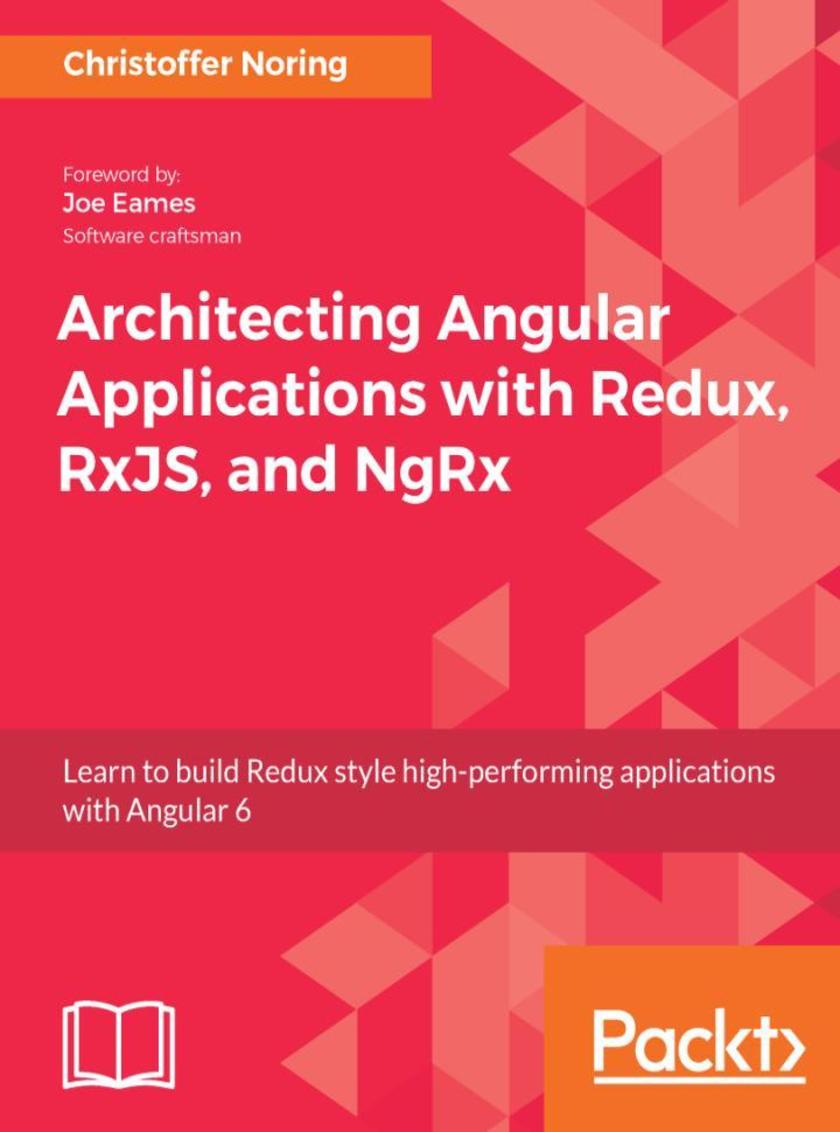
Architecting Angular Applications with Redux, RxJS, and NgRx
¥81.74
Manage state in Angular to write high performing web apps by combining the power of Flux, RxJS, and NgRx About This Book ? Learn what makes an excellent Angular application architecture ? Use Redux to write performant, consistent Angular applications ? Incorporate Reactive Programming principles and RxJS to make it easier to develop, test, and debug your Angular applications Who This Book Is For If you have been developing Angular applications and want to dive deeper into the Angular architecture with Redux, RxJS, and NgRx to write robust web apps, then this book is for you. What You Will Learn ? Understand the one-way data flow and Flux pattern ? Work with functional programming and asynchronous data streams ? Figure out how RxJS can help us address the flaws in promises ? Set up different versions of cascading calls ? Explore advanced operators ? Get familiar with the Redux pattern and its principles ? Test and debug different features of your application ? Build your own lightweight app using Flux, Redux, and NgRx In Detail Managing the state of large-scale web applications is a highly challenging task with the need to align different components, backends, and web workers harmoniously. When it comes to Angular, you can use NgRx, which combines the simplicity of Redux with the reactive programming power of RxJS to build your application architecture, making your code elegant and easy to reason about, debug, and test. In this book, we start by looking at the different ways of architecting Angular applications and some of the patterns that are involved in it. This will be followed by a discussion on one-way data flow, the Flux pattern, and the origin of Redux. The book introduces you to declarative programming or, more precisely, functional programming and talks about its advantages. We then move on to the reactive programming paradigm. Reactive programming is a concept heavily used in Angular and is at the core of NgRx. Later, we look at RxJS, as a library and master it. We thoroughly describe how Redux works and how to implement it from scratch. The two last chapters of the book cover everything NgRx has to offer in terms of core functionality and supporting libraries, including how to build a micro implementation of NgRx. This book will empower you to not only use Redux and NgRx to the fullest, but also feel confident in building your own version, should you need it. Style and approach This book covers everything there is to know to get well-acquainted with Angular without bogging you down. Everything is neatly laid out under clear headings for quick consultation, giving you the information required to understand a concept immediately.
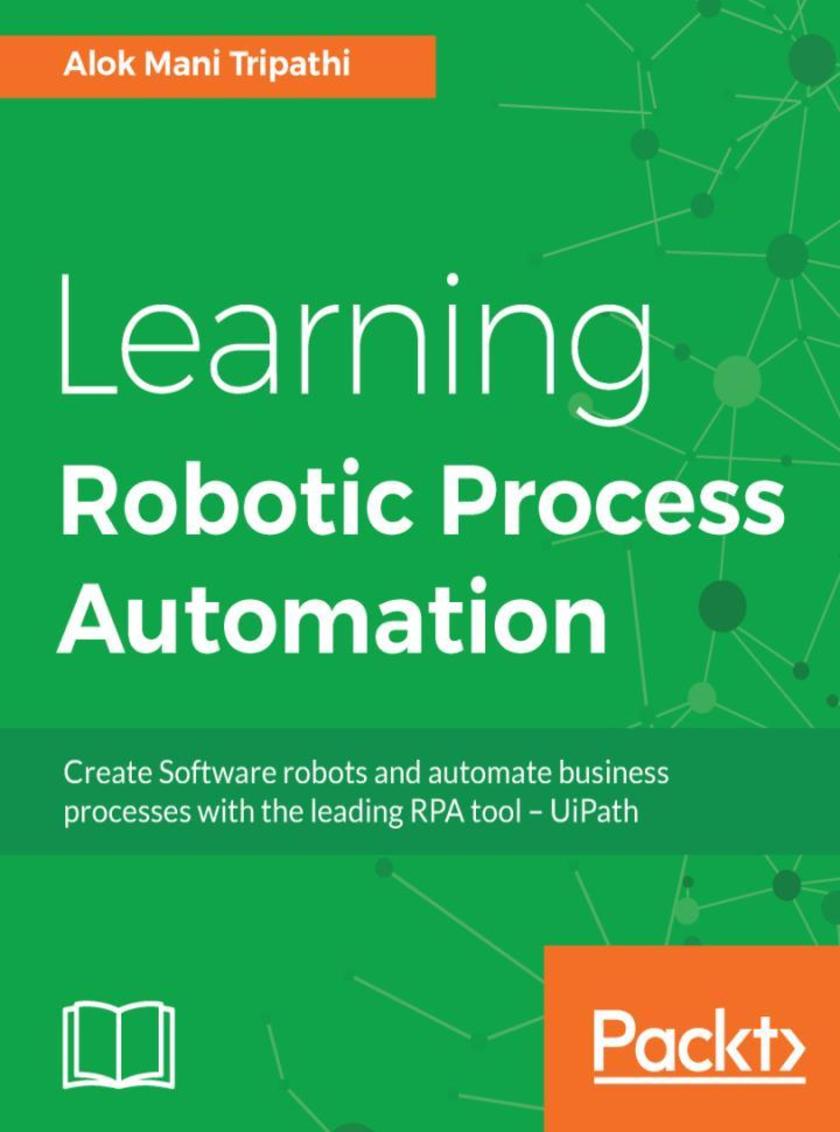
Learning Robotic Process Automation
¥90.46
Design RPA solutions to perform a wide range of transactional tasks with minimal cost and maximum ROI About This Book ? A beginner's guide to learn Robotic Process Automation and its impact on the modern world ? Design, test, and perform enterprise automation task with UiPath ? Create Automation apps and deploy them to all the computers in your department. Who This Book Is For If you would like to pursue a career in Robotic Process Automation or improve the efficiency of your businesses by automating common tasks, then this book is perfect for you. Prior programming knowledge of either Visual Basic or C# will be useful. What You Will Learn ? Understand Robotic Process Automation technology ? Learn UiPath programming techniques to deploy robot configurations ? Explore various data extraction techniques ? Learn about integrations with various popular applications such as SAP and MS Office ? Debug a programmed robot including logging and exception handling ? Maintain code version and source control ? Deploy and control Bots with UiPath Orchestrator In Detail Robotic Process Automation (RPA) enables automating business processes using software robots. Software robots interpret, trigger responses, and communicate with other systems just like humans do. Robotic processes and intelligent automation tools can help businesses improve the effectiveness of services faster and at a lower cost than current methods. This book is the perfect start to your automation journey, with a special focus on one of the most popular RPA tools: UiPath. Learning Robotic Process Automation takes you on a journey from understanding the basics of RPA to advanced implementation techniques. You will become oriented in the UiPath interface and learn about its workflow. Once you are familiar with the environment, we will get hands-on with automating different applications such as Excel, SAP, Windows and web applications, screen and web scraping, working with user events, as well as understanding exceptions and debugging. By the end of the book, you'll not only be able to build your first software bot, but also you'll wire it to perform various automation tasks with the help of best practices for bot deployment. Style and approach This book will help you kick-start your automation journey with a special focus on one of the most popular RPA tools: UiPath.
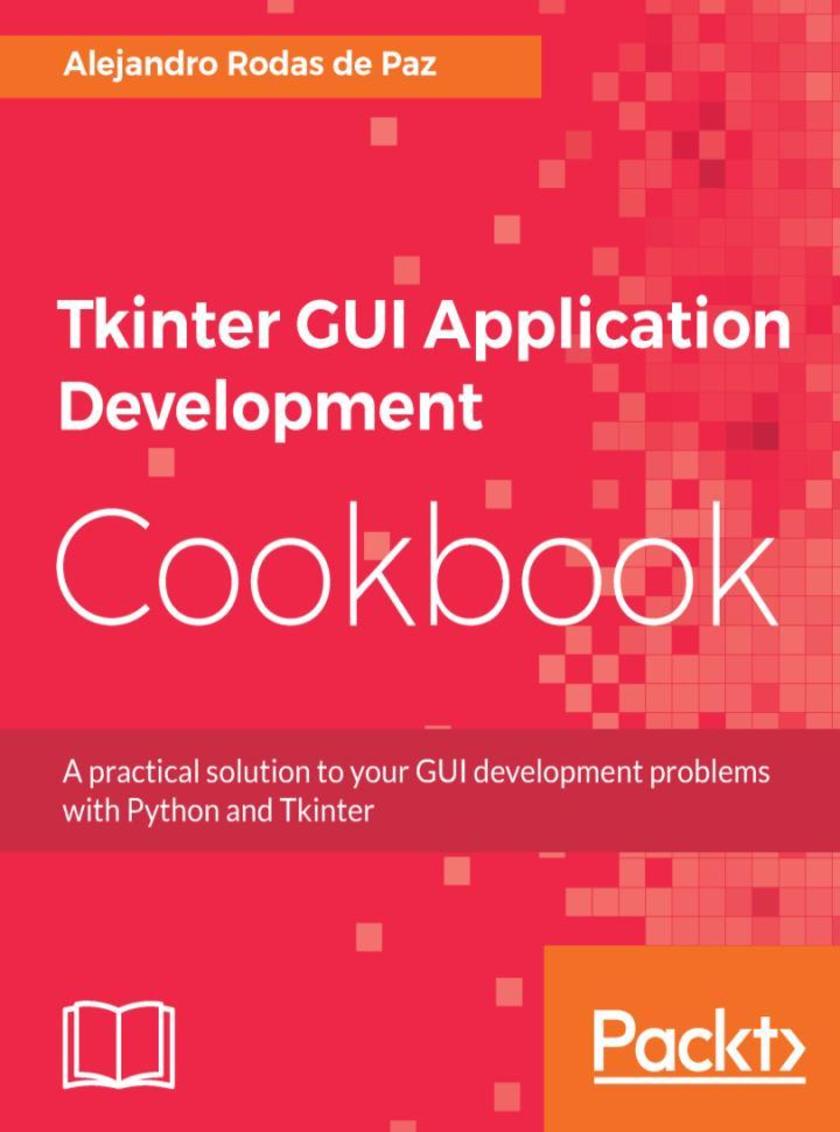
Tkinter GUI Application Development Cookbook
¥73.02
Discover solutions to all your Tkinter and Python GUI development problems About This Book ? Integrate efficient Python GUI programming techniques with Tkinter ? Efficiently implement advanced MVC architectures in your Python GUI apps ? Solve all your problems related to Tkinter and Python GUI development Who This Book Is For This book is for Python developers who are familiar with the basics of the language syntax, data structures, and OOP. You do not need previous experience with Tkinter or other GUI development libraries. What You Will Learn ? Add widgets and handle user events ? Lay out widgets within windows using frames and the different geometry managers ? Configure widgets so that they have a customized appearance and behavior ? Improve the navigation of your apps with menus and dialogs ? Apply object-oriented programming techniques in Tkinter applications ? Use threads to achieve responsiveness and update the GUI ? Explore the capabilities of the canvas widget and the types of items that can be added to it ? Extend Tkinter applications with the TTK (themed Tkinter) module In Detail As one of the more versatile programming languages, Python is well-known for its batteries-included philosophy, which includes a rich set of modules in its standard library; Tkinter is the library included for building desktop applications. Due to this, Tkinter is a common choice for rapid GUI development, and more complex applications can benefit from the full capabilities of this library. This book covers all of your Tkinter and Python GUI development problems and solutions. Tkinter GUI Application Development Cookbook starts with an overview of Tkinter classes and at the same time provides recipes for basic topics, such as layout patterns and event handling. Next, we cover how to develop common GUI patterns, such as entering and saving data, navigating through menus and dialogs, and performing long-running actions in the background. You will then make your apps leverage network resources effectively, perform 2D and 3D animation-related tasks, create 3D objects, and perform advanced graphical operations. Finally, this book covers using the canvas and themed widgets. By the end of the book, you will have an in-depth knowledge of Tkinter classes, and will know how to use them to build efficient and rich GUI applications. Style and approach A practical recipe-based guide that will help you find solutions to all your Tkinter and Python GUI development-related problems.
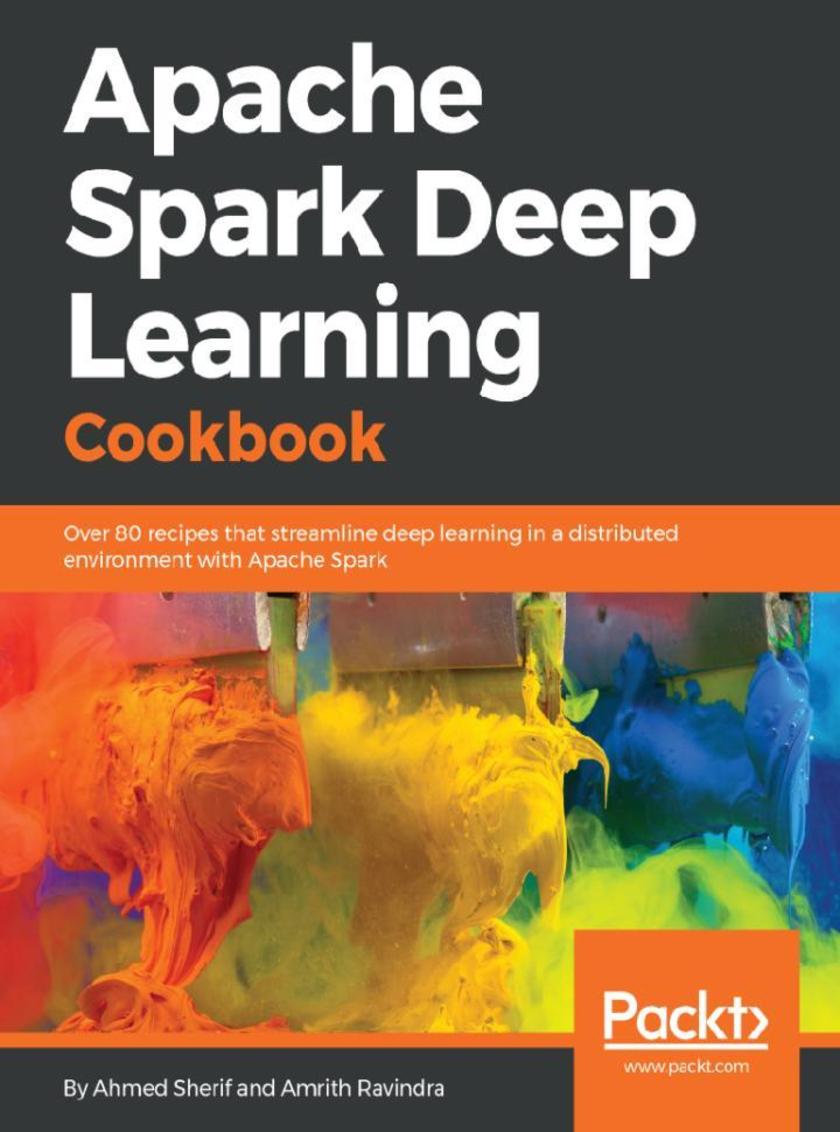
Apache Spark Deep Learning Cookbook
¥82.83
A solution-based guide to put your deep learning models into production with the power of Apache Spark Key Features * Discover practical recipes for distributed deep learning with Apache Spark * Learn to use libraries such as Keras and TensorFlow * Solve problems in order to train your deep learning models on Apache Spark Book Description With deep learning gaining rapid mainstream adoption in modern-day industries, organizations are looking for ways to unite popular big data tools with highly efficient deep learning libraries. As a result, this will help deep learning models train with higher efficiency and speed. With the help of the Apache Spark Deep Learning Cookbook, you’ll work through specific recipes to generate outcomes for deep learning algorithms, without getting bogged down in theory. From setting up Apache Spark for deep learning to implementing types of neural net, this book tackles both common and not so common problems to perform deep learning on a distributed environment. In addition to this, you’ll get access to deep learning code within Spark that can be reused to answer similar problems or tweaked to answer slightly different problems. You will also learn how to stream and cluster your data with Spark. Once you have got to grips with the basics, you’ll explore how to implement and deploy deep learning models, such as Convolutional Neural Networks (CNN) and Recurrent Neural Networks (RNN) in Spark, using popular libraries such as TensorFlow and Keras. By the end of the book, you'll have the expertise to train and deploy efficient deep learning models on Apache Spark. What you will learn * Set up a fully functional Spark environment * Understand practical machine learning and deep learning concepts * Apply built-in machine learning libraries within Spark * Explore libraries that are compatible with TensorFlow and Keras * Explore NLP models such as Word2vec and TF-IDF on Spark * Organize dataframes for deep learning evaluation * Apply testing and training modeling to ensure accuracy * Access readily available code that may be reusable Who this book is for If you’re looking for a practical and highly useful resource for implementing efficiently distributed deep learning models with Apache Spark, then the Apache Spark Deep Learning Cookbook is for you. Knowledge of the core machine learning concepts and a basic understanding of the Apache Spark framework is required to get the best out of this book. Additionally, some programming knowledge in Python is a plus.

Learning ServiceNow
¥90.46
IT service management automation at your fingertips About This Book ? Learn to leverage ServiceNow’s capabilities for improved IT automation by following step-by-step, practical instructions ? Build core administration, development, and maintenance skills with IT service management in ServiceNow ? Improve your workflow efficiency by designing and creating responsive and automated workflows, business logic, and front-end automation Who This Book Is For This book is for IT professionals and administrators who are planning to or are already trying to implement ServiceNow in their organization for Enterprise IT service management tasks. Some familiarity with web technologies (JavaScript) would be helpful. Prior ServiceNow experience is not necessary. What You Will Learn ? Read and write clear, effective code for the ServiceNow platform ? Identify and avoid common pitfalls and missteps that could seriously impact future progress and upgradeability ? Use debugging tools to troubleshoot when things go wrong ? Discover tips and tricks from top ServiceNow developers, architects, and administrators. Find out what the pros wish they knew when they were starting out In Detail This book is an updated version of Learning ServiceNow, that will cover the new and updated features of the ServiceNow platform. It will show you how to put important ServiceNow features to work in the real world, while introducing key concepts via examples of managing and automating IT services. It'll help you build a solid foundation of knowledge, and will demonstrate how to effectively implement and configure modules within ServiceNow. We'll show you how to configure and administer your instance, and then move on to building strong user interfaces and creating powerful workflows. We also cover other key elements of ServiceNow, such as notifications, security, reporting, and custom development. You will learn how to improve and automate your business' workflow and processes. By the end of this book, you will be able to successfully configure and manage ServiceNow like a pro. Style and approach This book is a step-by-step practical tutorial to help you quickly deploy and configure ServiceNow in your organization. It guides you through the process of building applications and understanding the underlying systems, to help you become a more effective ServiceNow/ITSM administrator and/or developer.
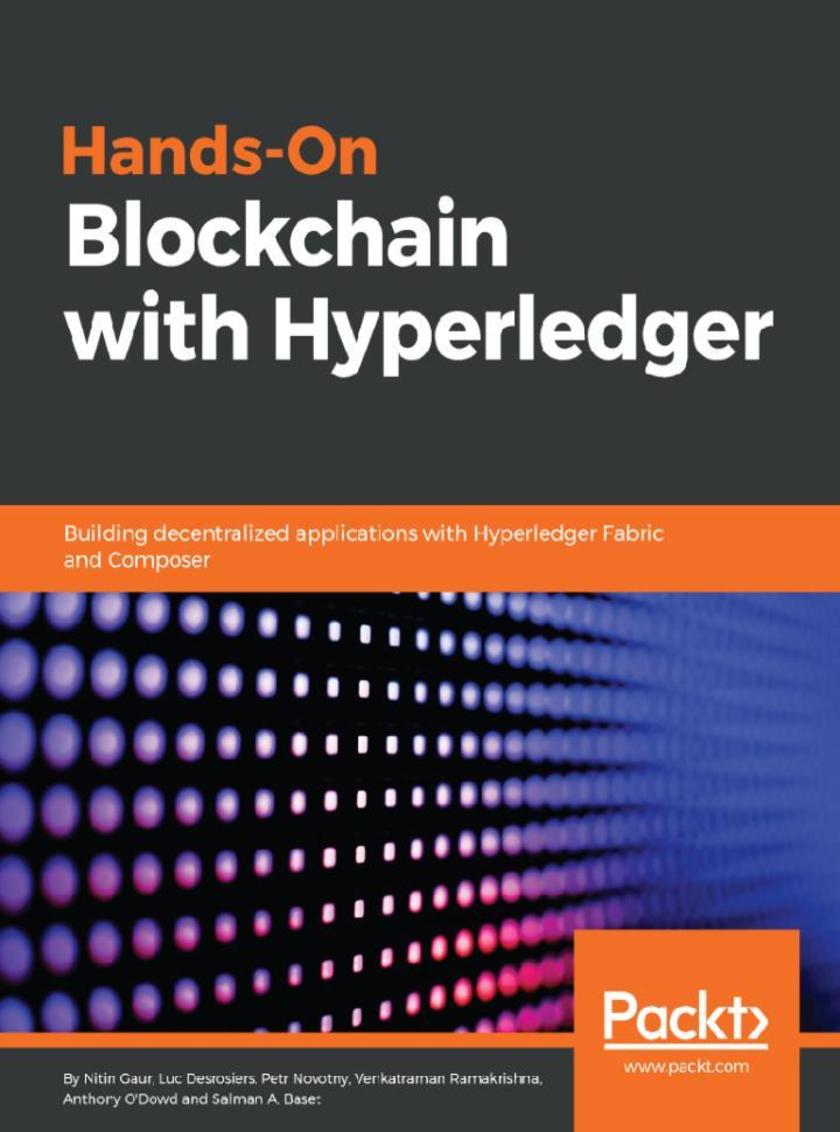
Hands-On Blockchain with Hyperledger
¥82.83
Leverage the power of Hyperledger Fabric to develop Blockchain-based distributed ledgers with ease About This Book ? Write your own chaincode/smart contracts using Golang on hyperledger network ? Build and deploy decentralized applications (DApps) ? Dive into real world blockchain challenges such as integration and scalability Who This Book Is For The book benefits business leaders as it provides a comprehensive view on blockchain business models, governance structure, and business design considerations of blockchain solutions. Technology leaders stand to gain a lot from the detailed discussion around the technology landscape, technology design, and architecture considerations in the book. With model-driven application development, this guide will speed up understanding and concept development for blockchain application developers. The simple and well organized content will put novices at ease with blockchain concepts and constructs. What You Will Learn ? Discover why blockchain is a game changer in the technology landscape ? Set up blockchain networks using basic Hyperledger Fabric deployment ? Understand the considerations for creating decentralized applications ? Learn the process of creating good business networks using Hyperledger ? Write Smart Contracts quickly with Hyperledger Composer ? Design transaction model and chaincode with Golang ? Deploy Composer REST Gateway to access the Composer transactions ? Discern how business network impacts your Hyperledger Fabric solutions In Detail Blockchain and Hyperledger technologies are hot topics. Hyperledger Fabric and Hyperledger Composer are open source projects that help organizations create private, permissioned blockchain networks. Applications that exploit them include finance, banking, supply chains, IoT, and much more. This book will be an easy reference to explore and build blockchain networks using Hyperledger technologies. This book will start by explaining the blockchain evolution, including an overview of relevant blockchain technologies. You will learn how to configure Hyperledger Fabric on a cloud platform. Understand the architectural components of Hyperledger Fabric, and how they are configured to build private blockchain networks, and applications that connect to them. You'll build up a network and application from scratch, starting with first principles. You'll learn how to implement smart contracts in chaincode and much more on the Hyperledger network. By the end of this book, you will be able to build and deploy your own decentralized applications using Hyperledger, addressing the key pain points encountered in the blockchain life cycle. Style and approach An easy-to-follow step by step guide which will help you get to grips with real world application of Hyperledger
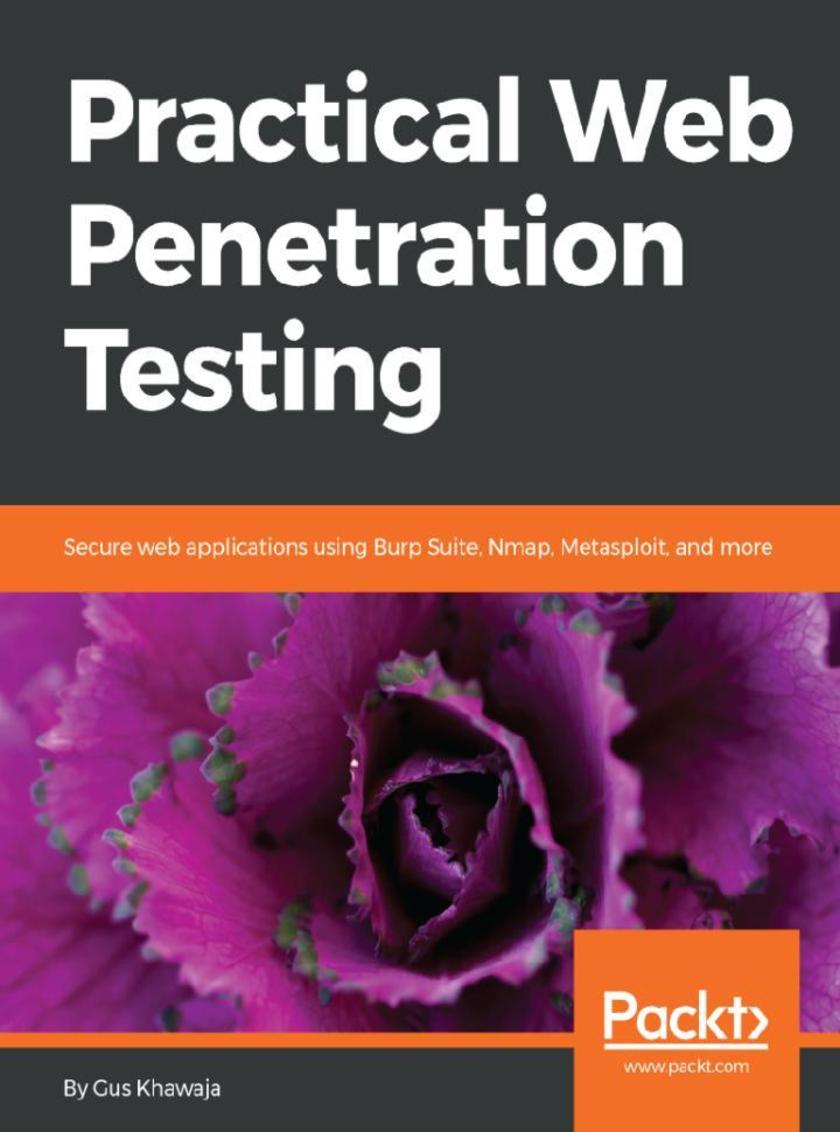
Practical Web Penetration Testing
¥73.02
Learn how to execute web application penetration testing end-to-end About This Book ? Build an end-to-end threat model landscape for web application security ? Learn both web application vulnerabilities and web intrusion testing ? Associate network vulnerabilities with a web application infrastructure Who This Book Is For Practical Web Penetration Testing is for you if you are a security professional, penetration tester, or stakeholder who wants to execute penetration testing using the latest and most popular tools. Basic knowledge of ethical hacking would be an added advantage. What You Will Learn ? Learn how to use Burp Suite effectively ? Use Nmap, Metasploit, and more tools for network infrastructure tests ? Practice using all web application hacking tools for intrusion tests using Kali Linux ? Learn how to analyze a web application using application threat modeling ? Know how to conduct web intrusion tests ? Understand how to execute network infrastructure tests ? Master automation of penetration testing functions for maximum efficiency using Python In Detail Companies all over the world want to hire professionals dedicated to application security. Practical Web Penetration Testing focuses on this very trend, teaching you how to conduct application security testing using real-life scenarios. To start with, you’ll set up an environment to perform web application penetration testing. You will then explore different penetration testing concepts such as threat modeling, intrusion test, infrastructure security threat, and more, in combination with advanced concepts such as Python scripting for automation. Once you are done learning the basics, you will discover end-to-end implementation of tools such as Metasploit, Burp Suite, and Kali Linux. Many companies deliver projects into production by using either Agile or Waterfall methodology. This book shows you how to assist any company with their SDLC approach and helps you on your journey to becoming an application security specialist. By the end of this book, you will have hands-on knowledge of using different tools for penetration testing. Style and approach In this book, you will learn and understand the workflow of application security testing. Starting from analysis using threat modeling until the testing phase and before the web project goes into production, you will be able conduct effective penetrating testing using web intrusion tests , network infrastructure tests, and code review.
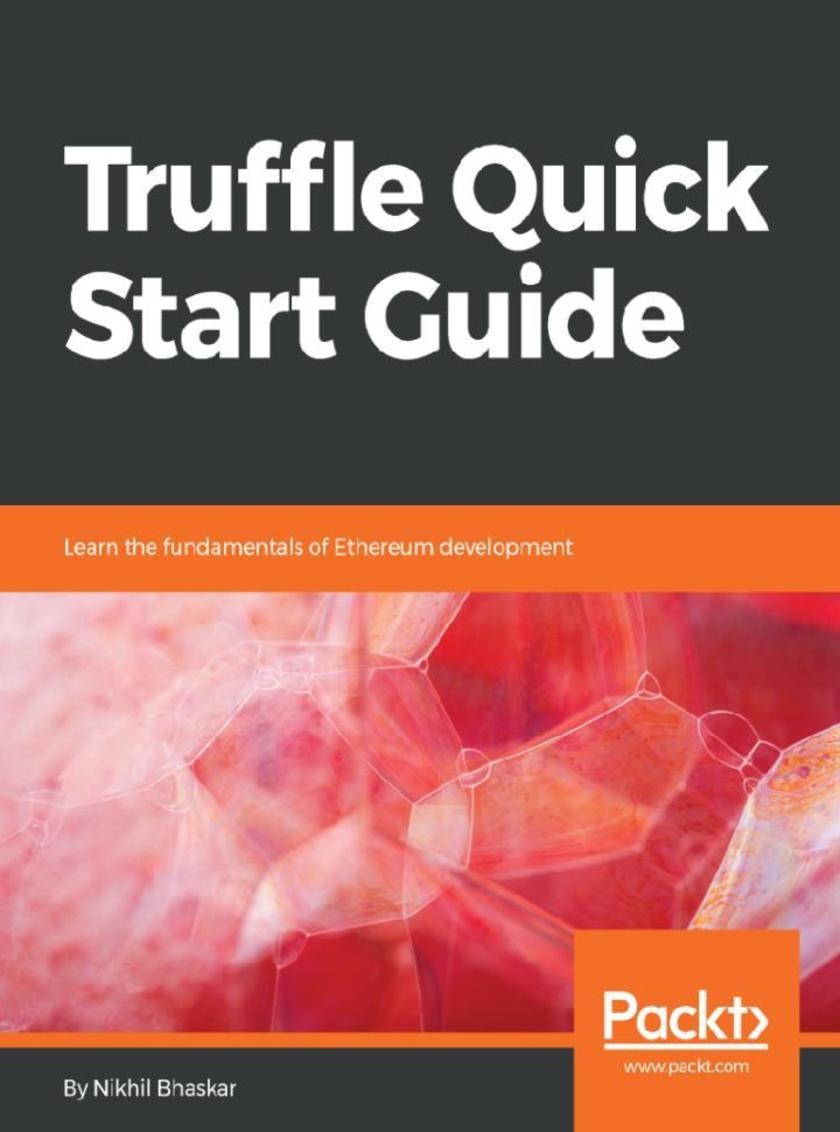
Truffle Quick Start Guide
¥50.13
Develop, test, and deploy decentralized applications for Ethereum platform About This Book ? Build your first Ethereum Dapp with Truffle: the most popular Ethereum development framework ? Build, compile, and deploy smart contracts in your development environment ? Embrace Blockchains and utilize it to create new generation of secured and scalable apps Who This Book Is For This book is for web developers who are interested in the new world blockchain. Some basic understanding of JavaScript and web services is required. No prior knowledge of Decentralized applications or blockchain is required. What You Will Learn ? Understand the fundamentals of Truffle and Web3 ? Build a decentralized application with Truffle, while choosing the correct Ethereum client ? Connect your Dapp to Ethereum clients including Geth, Parity, and Ganache ? Migrate and test your Dapp with the correct networks such as Ropsten and Rinkeby ? Package a decentralized application into a user-friendly product by integrating Truffle with JavaScript frameworks such as Angular, React and Vue ? Explore tools including Ethereum Package Manager, the Registrar and browser wallets, and exploit third-party smart contract libraries. ? Evaluate the common migration pitfalls and how to mitigate them In Detail Truffle is a world-class development environment, testing framework and asset pipeline for Ethereum, aiming to make life as an Ethereum developer easier. If you are a web developer wanting to try your hand at developing Dapps with Truffle, then this is the book for you. This book will teach you to write smart contracts and build Dapps with Truffle. You will begin with covering the basics of Truffle, briefly explaining how it integrates Solidity and Web3, in orderto start building a mini decentralized application. Also, you will dive into migration, testing and integrating Truffle with the use of popular JavaScript frameworks. Lastly, you will ship your decentralized application and package it into a product. Moreover, you will go through the best practices in Truffle,so as to increase your proficiency in building Dapps with Truffle. By the end of the book, you will be able to write smart contracts and build decentralized applications with Truffle on Ethereum blockchains. Style and approach An intuitive, step-by-step and engaging guide that will teach you to build a real-world, decentralized application with Truffle.
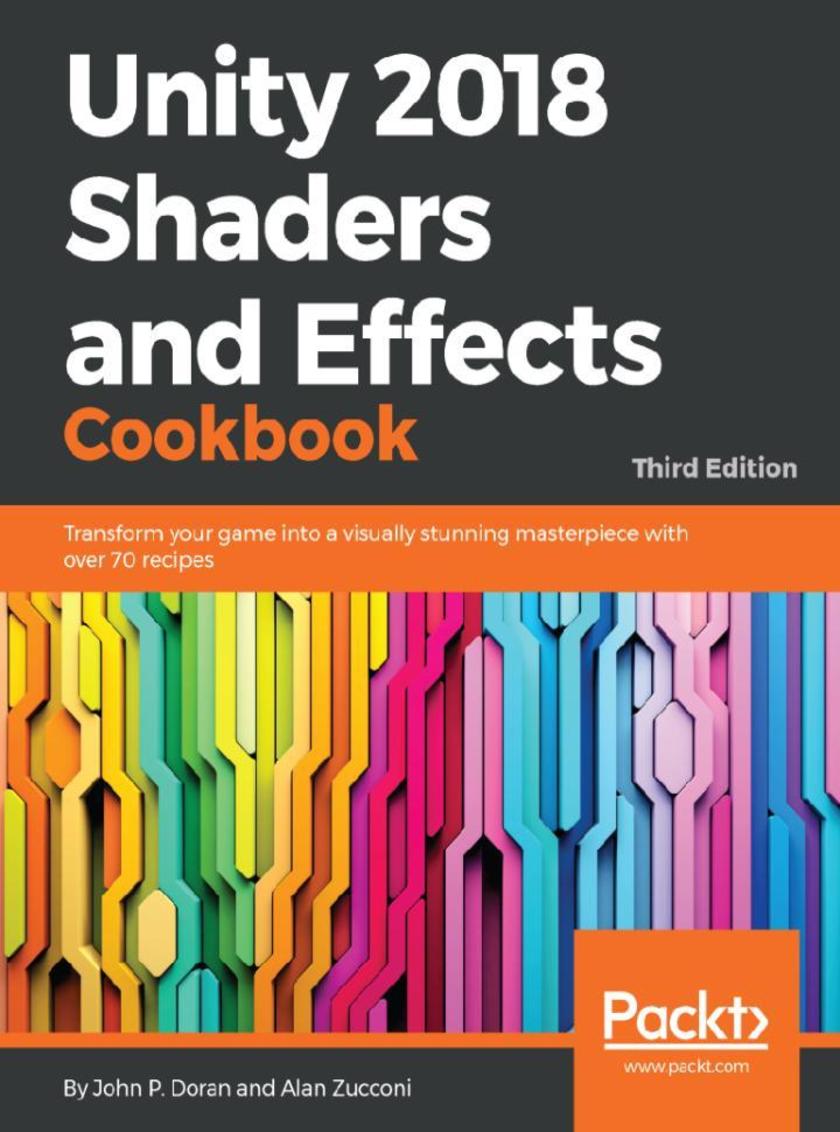
Unity 2018 Shaders and Effects Cookbook
¥90.46
Bring realism to your games by mastering post-processing effects and advanced shading techniques in Unity 2018 About This Book ? Learn the secrets of creating AAA quality shaders without writing long algorithms ? Master shader programming through easy-to-follow examples ? Create stunning visual effects that can be used in 3D games Who This Book Is For Unity Shaders and Effects Cookbook is for developers who want to create their first shaders in Unity 2018 or wish to take their game to a whole new level by adding professional post-processing effects. A solid understanding of Unity is required to get the most from this book. What You Will Learn ? Understand physically based rendering to fit the aesthetic of your game ? Write shaders from scratch in ShaderLab and HLSL/Cg ? Combine shader programming with interactive scripts to add life to your materials ? Design efficient shaders for mobile platforms without sacrificing their realism ? Use state-of-the-art techniques, such as volumetric explosions and fur shading ? Master the math and algorithms behind the most used lighting models ? Understand how shader models have evolved and how you can create your own In Detail Since their introduction to Unity, shaders have been seen as notoriously difficult to understand and implement in games. Complex mathematics has always stood in the way of creating your own shaders and attaining the level of realism you crave. Unity 2018 Shaders and Effects Cookbook changes that by giving you a recipe-based guide to creating shaders using Unity. It will show you everything you need to know about vectors, how lighting is constructed with them, and how textures are used to create complex effects without the heavy math. This book starts by teaching you how to use shaders without writing code with the post-processing stack. Then, you’ll learn how to write shaders from scratch, build up essential lighting, and finish by creating stunning screen effects just like those in high-quality 3D and mobile games. You'll discover techniques, such as normal mapping, image-based lighting, and animating your models inside a shader. We'll explore how to use physically based rendering to treat light the way it behaves in the real world. At the end, we’ll even look at Unity 2018’s new Shader Graph system. With this book, what seems like a dark art today will be second nature by tomorrow. Style and approach The recipes in this book contain step-by-step instructions, complemented with screenshots, code, and real-world examples.
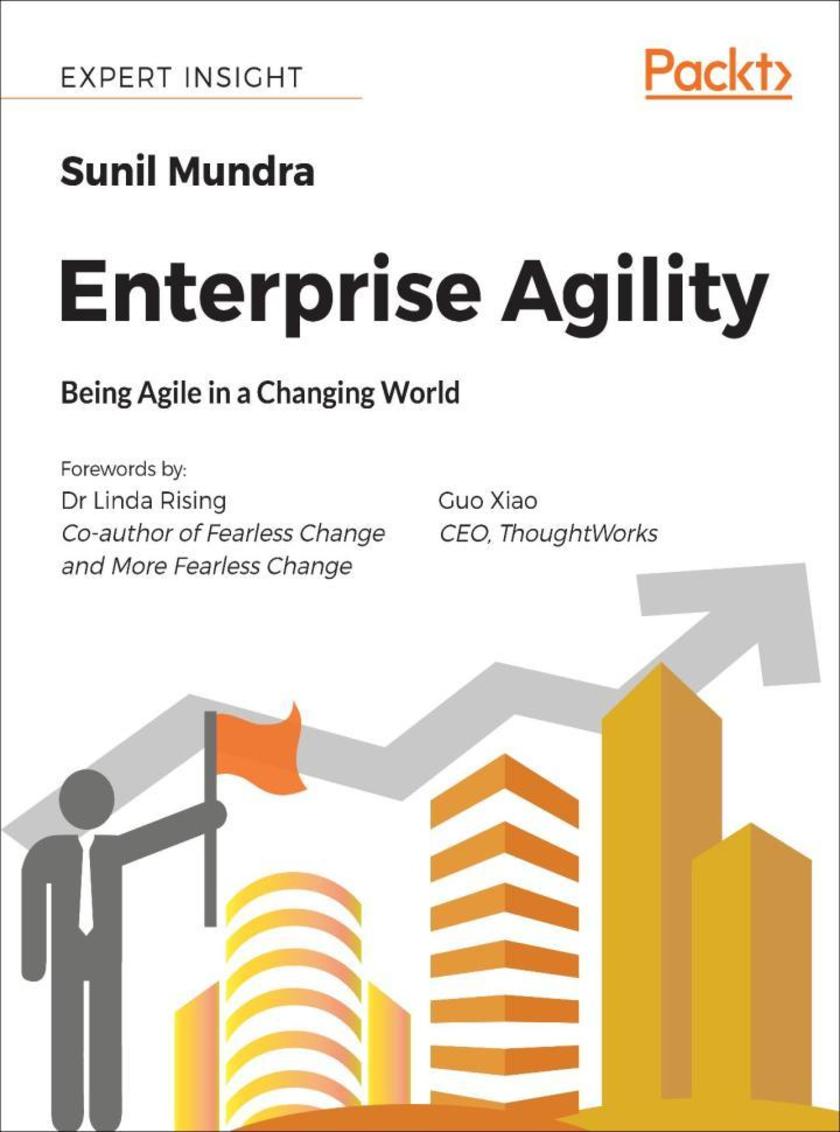
Enterprise Agility
¥63.21
Enterprise Agility is practical framework for enhancing Agility and equipping your company with the tools to survive. About This Book ? Prepare your company to navigate the rapidly-moving business world ? Enhance Agility in every component of your organization ? Build a framework that meets the unique requirements of your enterprise Who This Book Is For Enterprise Agility is a tool for anyone with the motivation to influence outcomes in an enterprise, who aspires to improve Agility. Readers from the following backgrounds will benefit: chief executive officer, chief information officer, people/human resource director, information technology director, head of change program, head of transformation, and Agile coach/consultant. What You Will Learn ? Drive agility-oriented change across the enterprise ? Understand why agility matters (more than ever) to modern enterprises ? Adopt and influence an Agile mindset in your teams and in your organization ? Understand the concept of a CAS and how to model enterprise and leadership behaviors on CAS characteristics to enhance enterprise agility ? Understand and convey the differences between Agile and true enterprise agility ? Create an enterprise-specific action plan to enhance agility ? Become a champion for enterprise agility ? Recognize the advantages and challenges of distributed teams, and how Agile ways of working can remedy the rough spots ? Enable and motivate your IT partners to adopt Agile ways of working In Detail The biggest challenge enterprises face today is dealing with fast-paced change in all spheres of business. Enterprise Agility shows how an enterprise can address this challenge head on and thrive in the dynamic environment. Avoiding the mechanistic construction of existing enterprises that focus on predictability and certainty, Enterprise Agility delivers practical advice for responding and adapting to the scale and accelerating pace of disruptive change in the business environment. Agility is a fundamental shift in thinking about how enterprises work to effectively deal with disruptive changes in the business environment. The core belief underlying agility is that enterprises are open and living systems. These living systems, also known as complex adaptive systems (CAS), are ideally suited to deal with change very effectively. Agility is to enterprises what health is to humans. There are some foundational principles that can be broadly applied, but the definition of healthy is very specific to each individual. Enterprise Agility takes a similar approach with regard to agility: it suggests foundational practices to improve the overall health of the body—culture, mindset, and leadership—and the health of its various organs: people, process, governance, structure, technology, and customers. The book also suggests a practical framework to create a plan to enhance agility. Style and approach Enterprise Agility is a step-by-step guide to facing change and uncertainty head-on. The books provides practical ways to apply Agile methodologies and boost Agility throughout a business.
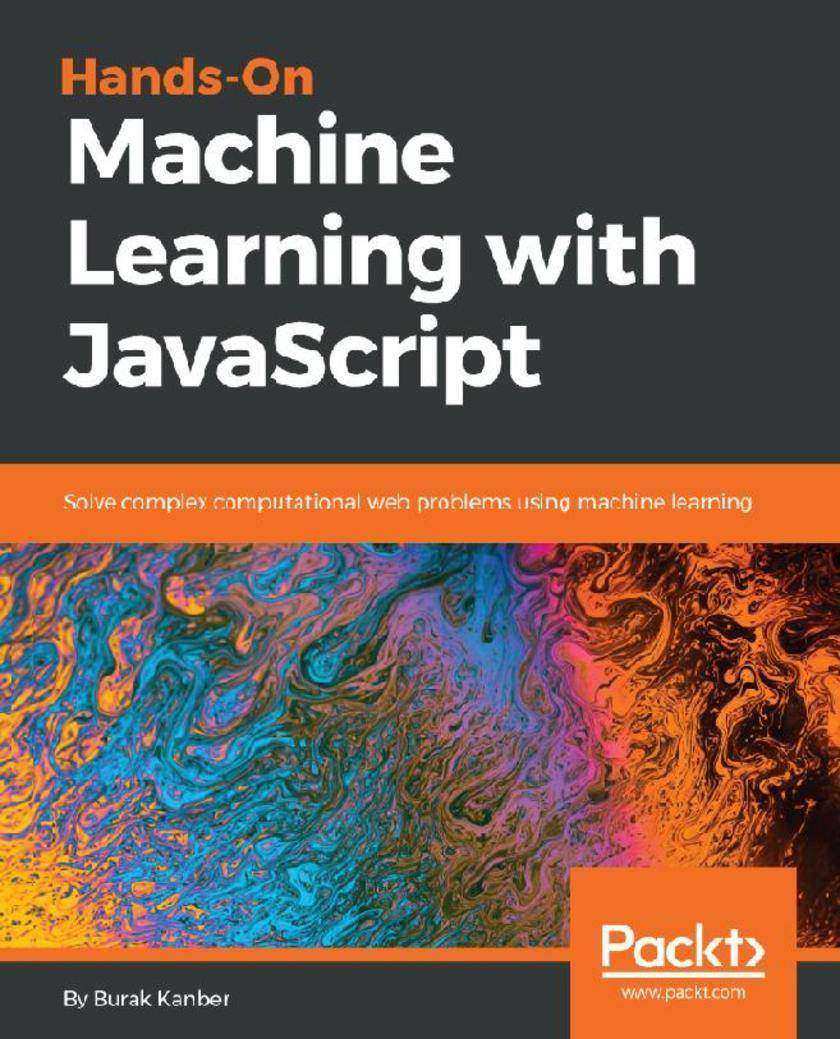
Hands-on Machine Learning with JavaScript
¥81.74
A definitive guide to creating an intelligent web application with the best of machine learning and JavaScript About This Book ? Solve complex computational problems in browser with JavaScript ? Teach your browser how to learn from rules using the power of machine learning ? Understand discoveries on web interface and API in machine learning Who This Book Is For This book is for you if you are a JavaScript developer who wants to implement machine learning to make applications smarter, gain insightful information from the data, and enter the field of machine learning without switching to another language. Working knowledge of JavaScript language is expected to get the most out of the book. What You Will Learn ? Get an overview of state-of-the-art machine learning ? Understand the pre-processing of data handling, cleaning, and preparation ? Learn Mining and Pattern Extraction with JavaScript ? Build your own model for classification, clustering, and prediction ? Identify the most appropriate model for each type of problem ? Apply machine learning techniques to real-world applications ? Learn how JavaScript can be a powerful language for machine learning In Detail In over 20 years of existence, JavaScript has been pushing beyond the boundaries of web evolution with proven existence on servers, embedded devices, Smart TVs, IoT, Smart Cars, and more. Today, with the added advantage of machine learning research and support for JS libraries, JavaScript makes your browsers smarter than ever with the ability to learn patterns and reproduce them to become a part of innovative products and applications. Hands-on Machine Learning with JavaScript presents various avenues of machine learning in a practical and objective way, and helps implement them using the JavaScript language. Predicting behaviors, analyzing feelings, grouping data, and building neural models are some of the skills you will build from this book. You will learn how to train your machine learning models and work with different kinds of data. During this journey, you will come across use cases such as face detection, spam filtering, recommendation systems, character recognition, and more. Moreover, you will learn how to work with deep neural networks and guide your applications to gain insights from data. By the end of this book, you'll have gained hands-on knowledge on evaluating and implementing the right model, along with choosing from different JS libraries, such as NaturalNode, brain, harthur, classifier, and many more to design smarter applications. Style and approach This is a practical tutorial that uses hands-on examples to step through some real-world applications of machine learning. Without shying away from the technical details, you will explore machine learning with JavaScript using clear and practical examples.
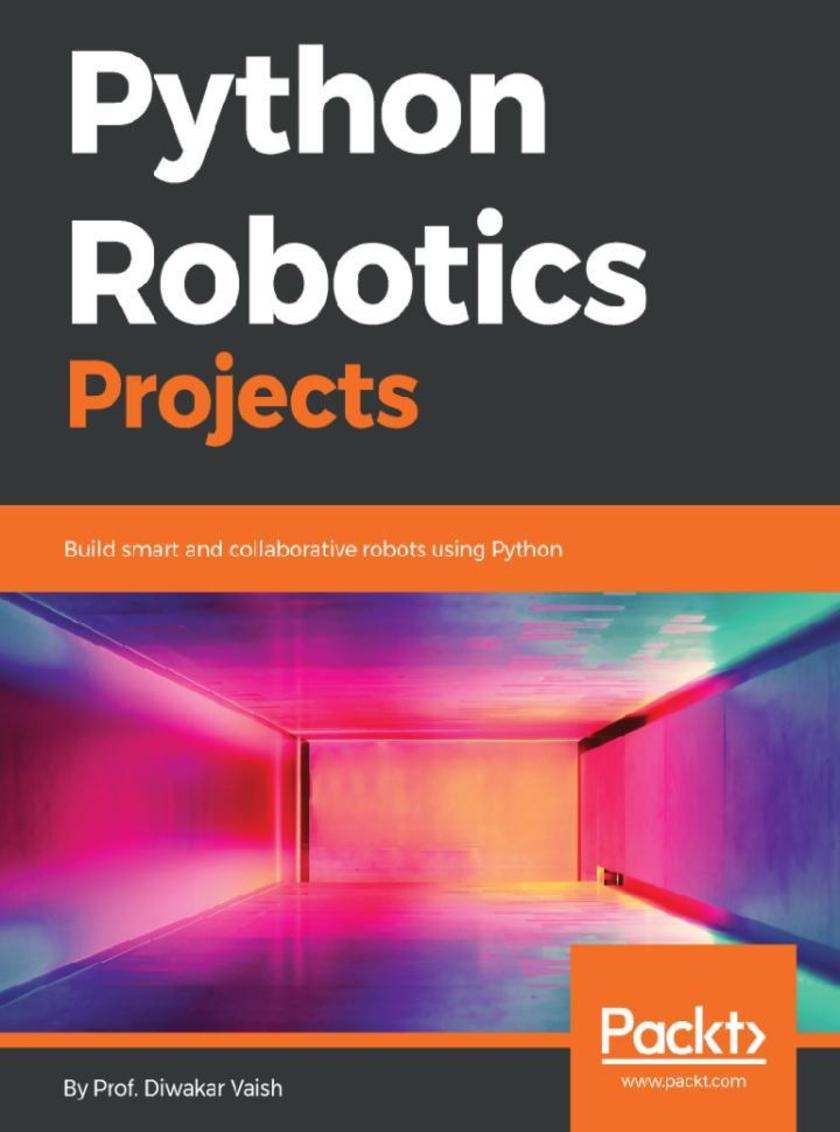
Python Robotics Projects
¥81.74
Leverage the power of Python to build DIY robotic projects About This Book ? Design, build, and stimulate collaborative robots ? Build high-end robotics projects such as a customized personal Jarvis ? Leverage the power of Python and ROS for DIY robotic projects Who This Book Is For If building robots is your dream, then this book is made for you. Prior knowledge of Python would be an added advantage. What You Will Learn ? Get to know the basics of robotics and its functions ? Walk through interface components with microcontrollers ? Integrate robotics with the IoT environment ? Build projects using machine learning ? Implement path planning and vision processing ? Interface your robots with Bluetooth In Detail Robotics is a fast-growing industry. Multiple surveys state that investment in the field has increased tenfold in the last 6 years, and is set to become a $100-billion sector by 2020. Robots are prevalent throughout all industries, and they are all set to be a part of our domestic lives. This book starts with the installation and basic steps in configuring a robotic controller. You'll then move on to setting up your environment to use Python with the robotic controller. You'll dive deep into building simple robotic projects, such as a pet-feeding robot, and more complicated projects, such as machine learning enabled home automation system (Jarvis), vision processing based robots and a self-driven robotic vehicle using Python. By the end of this book, you'll know how to build smart robots using Python. Style and approach A simple step-by-step guide to help you learn the concepts of robotics using simple to advanced steps. You’ll not only learn the concepts of AI, machine learning, and Vision Processing, but also how to practically implement them in your projects.

Echo Quick Start Guide
¥45.77
Echo is a leading framework for creating web applications with the Go language. This book will show you how to develop scalable real-world web apps, RESTful services, and backend systems with Echo. About This Book ? The easiest way to learn how to build web apps with Echo ? Build a full working project ? For Go developers with only basic web development knowledge required Who This Book Is For You will need to know the basics of the Go language, and the general concepts of web development. What You Will Learn ? Key design considerations for high performance Echo applications ? How Echo handles routing ? How context is managed through the lifetime of the request and response pipeline ? Decrease complexity of your apps by developing middleware functions ? Interact with the request through request data bindings ? Interact with the response through response data renderings within the framework ? Use Echo's logging and error handling facilities ? Render Go templates within Echo to allow for server side rendering of content In Detail Echo is a leading framework for creating web applications with the Go language.? This book will show you how to develop scalable real-world web apps, RESTful services, and backend systems with Echo.? After a thorough understanding of the basics, you'll be introduced to all the concepts for a building real-world web system with Echo. You will start with the the Go HTTP standard library, and setting up your work environment. You will move on to Echo handlers, group routing, data binding, and middleware processing. After that, you will learn how to test your Go application and use templates.? By the end of this book you will be able to build your very own high performance apps using Echo. A Quick Start Guide is a focussed, shorter title which provides a faster paced introduction to a technology. They are for people who don’t need all the detail at this point in their learning curve. The presentation has been streamlined to concentrate on the things you really need to know, rather than everything. Style and approach This book creates a working example of a web application written with the Echo framework, and shows you enough of Echo to give context for a developer to bootstrap a high performance web application with the smallest amount of development time.
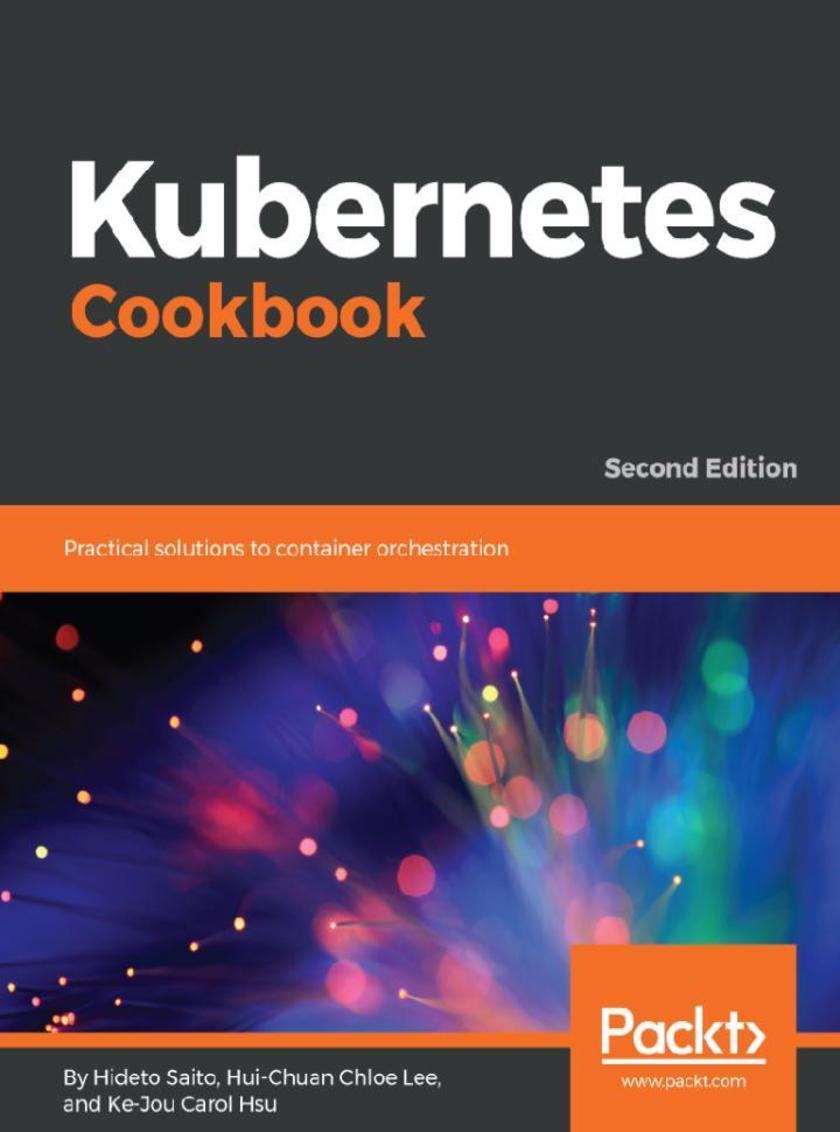
Kubernetes Cookbook
¥73.02
Learn how to automate and manage your containers and reduce the overall operation burden on your system. About This Book ? Use containers to manage, scale and orchestrate apps in your organization ? Transform the latest concept of Kubernetes 1.10 into examples ? Expert techniques for orchestrating containers effectively Who This Book Is For This book is for system administrators, developers, DevOps engineers, or any stakeholder who wants to understand how Kubernetes works using a recipe-based approach. Basic knowledge of Kubernetes and Containers is required. What You Will Learn ? Build your own container cluster ? Deploy and manage highly scalable, containerized applications with Kubernetes ? Build high-availability Kubernetes clusters ? Build a continuous delivery pipeline for your application ? Track metrics and logs for every container running in your cluster ? Streamline the way you deploy and manage your applications with large-scale container orchestration In Detail Kubernetes is an open source orchestration platform to manage containers in a cluster environment. With Kubernetes, you can configure and deploy containerized applications easily. This book gives you a quick brush up on how Kubernetes works with containers, and an overview of main Kubernetes concepts, such as Pods, Deployments, Services and etc. This book explains how to create Kubernetes clusters and run applications with proper authentication and authorization configurations. With real-world recipes, you'll learn how to create high availability Kubernetes clusters on AWS, GCP and in on-premise datacenters with proper logging and monitoring setup. You'll also learn some useful tips about how to build a continuous delivery pipeline for your application. Upon completion of this book, you will be able to use Kubernetes in production and will have a better understanding of how to manage containers using Kubernetes. Style and approach This recipe-based book will teach you how to use Kubernetes in production and will help you discover various steps involved in managing your containers using Kubernetes




 购物车
购物车 个人中心
个人中心



